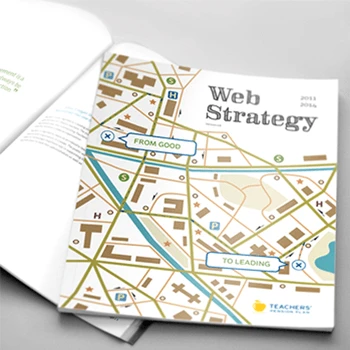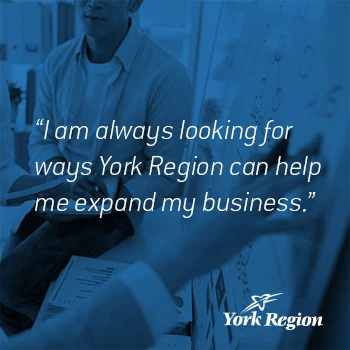What exactly is Front End UX Code Development and why should we invest in it?
Front End UX Code Development bridges the gap between design and functionality by creating pixel-perfect, responsive code that preserves the integrity of your UX designs. We transform your visual designs into seamless, high-performance user interfaces that function exactly as intended across all devices and browsers.
Tip: Choose development partners who understand that brilliant designs can be diminished by poor code implementation—quality matters in both design and development phases.
How does front-end development fit into the Experience Thinking framework?
Front-end development primarily serves the product quadrant of Experience Thinking while supporting the other three areas. It implements interactive product features, delivers content effectively, reinforces brand identity through visual consistency, and enables service touchpoints. This creates cohesive experiences across all user interactions.
Tip: Look for developers who understand how code implementation affects brand perception, content delivery, and service interactions—not just technical functionality.
What's the difference between regular web development and UX-focused front-end development?
UX-focused front-end development prioritizes user experience at every code decision. We consider interaction patterns, accessibility, performance, and responsive behavior from a user's perspective. Regular web development might focus primarily on technical functionality without considering the experience impact.
Tip: Ensure your development team includes UX understanding in their coding practices, not just technical implementation skills.
How do you ensure the coded experience matches the original design intent?
We maintain design intent through detailed experience specifications, annotated wireframes, and coded visual patterns that capture the design framework. Our process includes regular design reviews and check-ins to ensure the coded experience preserves the original design quality and user experience goals.
Tip: Insist on development processes that include ongoing design review and collaboration rather than just handoff-based approaches.
What technologies and frameworks do you work with?
We work with HTML, CSS (including Sass), Bootstrap, jQuery, JavaScript, Angular, Angular-Ionic, React, ASP.NET, WPF, C#, and popular CMS platforms like WordPress, Umbraco, and Drupal. We select technologies based on project requirements and long-term maintainability.
Tip: Choose developers who recommend technology stacks based on your specific needs rather than just their preferred tools.
How do you handle responsive design and mobile optimization?
We develop responsive front-end code that adapts seamlessly to multiple screen sizes, devices, and orientations. Our approach considers touch interactions, mobile-specific user behaviors, and performance constraints to ensure optimal experiences across all platforms.
Tip: Test responsive implementations on actual devices, not just browser resize tools, to ensure real-world performance.
What's your approach to accessibility in front-end development?
Accessibility is built into our development process from the start, not added as an afterthought. We implement proper semantic HTML, ARIA labels, keyboard navigation support, and screen reader compatibility while maintaining visual design integrity.
Tip: Ensure accessibility compliance is integrated throughout development rather than audited only at the end.
What's your typical front-end development process?
We start by thoroughly reviewing UX designs and setting up the development environment. Then we architect and develop the front-end code following detailed specifications. Throughout the process, we conduct regular reviews with design teams to ensure the product remains true to the original design intent.
Tip: Look for development processes that include regular design collaboration rather than isolated coding work.
How do you handle the handoff from design to development?
We create detailed experience specifications that combine annotated wireframes with coded visual patterns. This documentation captures reusable components and design patterns, ensuring smooth transitions from design concepts to functional code while maintaining design quality.
Tip: Insist on detailed design specifications that include interaction behaviors and responsive requirements, not just static mockups.
What's your approach to creating reusable code components?
We develop modular, reusable components that can be easily maintained and extended. Our component library approach includes search, selection, navigation, and other common patterns that maintain consistency across your product while enabling efficient development.
Tip: Build a component library early in the development process to ensure consistency and reduce long-term maintenance costs.
How do you ensure code quality and maintainability?
We follow established coding standards, conduct regular code reviews, and implement automated testing where appropriate. Our code is structured for readability, maintainability, and future extensibility while adhering to performance best practices.
Tip: Establish clear coding standards and review processes early in the project to prevent technical debt accumulation.
What's your approach to version control and collaboration?
We use Git-based version control with clear branching strategies that support collaborative development. Our workflow includes code reviews, automated testing integration, and documentation that enables smooth team collaboration and knowledge transfer.
Tip: Ensure your development team has established workflows for collaboration and knowledge sharing, not just individual coding practices.
How do you handle browser compatibility and cross-platform testing?
We test across multiple browsers, devices, and operating systems to ensure consistent experiences. Our testing includes functionality verification, visual consistency checks, and performance validation across different platforms and browser versions.
Tip: Define browser support requirements early and ensure testing covers actual user environments, not just the latest browsers.
What's your approach to performance optimization?
Performance optimization is integrated throughout our development process, not added afterward. We consider code efficiency, image optimization, loading strategies, and user experience impact when making development decisions to ensure fast, responsive interfaces.
Tip: Set performance budgets and metrics early in development rather than trying to optimize after implementation is complete.
How do you approach CSS architecture and styling?
We use scalable CSS architectures like BEM or utility-first approaches depending on project needs. Our styling approach considers maintainability, performance, and team collaboration while ensuring consistent visual implementation across all components.
Tip: Choose CSS methodologies that match your team's skill level and project scale rather than following trends blindly.
What's your approach to JavaScript and interactive functionality?
We implement JavaScript functionality that enhances user experience without compromising accessibility or performance. Our approach includes progressive enhancement, error handling, and graceful degradation to ensure reliable functionality across different environments.
Tip: Ensure JavaScript implementations include proper error handling and fallback options for users with disabled JavaScript.
How do you handle complex animations and micro-interactions?
We implement animations and micro-interactions that enhance user experience without compromising performance. Our approach considers user preferences, accessibility requirements, and performance impact while creating engaging, purposeful interactions.
Tip: Focus on purposeful animations that improve user understanding rather than decorative effects that may impact performance.
What's your approach to form design and validation?
We create forms that are both user-friendly and functionally robust. Our implementation includes real-time validation, clear error messaging, accessibility support, and progressive enhancement to ensure smooth user interactions across all scenarios.
Tip: Test form implementations with real users to ensure validation messages are helpful rather than frustrating.
How do you handle data integration and API connectivity?
We implement clean, efficient data integration that handles loading states, error conditions, and real-time updates gracefully. Our approach includes proper error handling, loading indicators, and fallback options to maintain good user experience during data operations.
Tip: Design for various data states including loading, error, and empty states—not just successful data scenarios.
What's your approach to image optimization and media handling?
We implement responsive images, proper formats, and loading strategies that balance visual quality with performance. Our approach includes lazy loading, format optimization, and responsive image solutions that adapt to different devices and connection speeds.
Tip: Implement image optimization strategies from the start rather than trying to fix performance issues later.
How do you handle third-party integrations and dependencies?
We carefully evaluate third-party dependencies for security, performance, and maintenance implications. Our integration approach includes fallback options, performance monitoring, and security considerations to ensure reliable, maintainable solutions.
Tip: Audit third-party dependencies regularly and have fallback plans for critical functionality that depends on external services.
What's your approach to testing front-end code?
We implement multi-layered testing including unit tests for individual components, integration tests for interactive functionality, and end-to-end testing for complete user workflows. Our testing approach ensures reliability without slowing down development cycles.
Tip: Balance test coverage with development speed—focus testing efforts on critical user paths and complex functionality.
How do you handle bug tracking and issue resolution?
We use systematic bug tracking with clear severity levels, reproduction steps, and resolution timelines. Our approach includes proactive issue identification, clear communication about fixes, and verification processes to ensure issues are properly resolved.
Tip: Establish clear processes for reporting and prioritizing bugs based on user impact rather than just technical severity.
What's your approach to code reviews and quality control?
We conduct thorough code reviews that consider functionality, performance, accessibility, and maintainability. Our review process includes automated checks where appropriate and human review for design implementation and user experience considerations.
Tip: Include UX considerations in code reviews, not just technical implementation details.
How do you ensure accessibility compliance in your code?
We implement accessibility features throughout development and conduct regular accessibility audits. Our approach includes automated testing tools, manual verification with assistive technologies, and real user testing to ensure compliance and usability.
Tip: Test accessibility features with actual assistive technology users rather than relying only on automated tools.
What's your approach to security in front-end development?
We implement security best practices including input validation, XSS prevention, secure authentication handling, and proper data sanitization. Our approach includes regular security audits and staying current with emerging security threats and mitigation strategies.
Tip: Include security considerations in all development phases rather than treating security as a separate concern.
How do you handle performance monitoring and optimization?
We implement performance monitoring tools and establish performance budgets that guide development decisions. Our approach includes regular performance audits, bottleneck identification, and optimization strategies that maintain good user experience.
Tip: Monitor real-world performance metrics from actual users rather than just development environment benchmarks.
What's your approach to documentation and knowledge transfer?
We create comprehensive documentation that covers code architecture, component usage, deployment procedures, and maintenance guidelines. Our documentation approach enables smooth knowledge transfer and long-term maintainability.
Tip: Invest in documentation that enables your team to maintain and extend the codebase independently.
How do you collaborate with existing development teams?
We integrate seamlessly with your existing development workflow, whether as a full project team or as embedded specialists. Our collaborative approach includes knowledge transfer, mentoring, and establishing sustainable development practices that benefit your entire team.
Tip: Look for development partners who focus on enabling your team's long-term success rather than just completing isolated projects.
What's your approach to working with designers during development?
We maintain close collaboration with designers throughout development, not just during handoff. Our approach includes regular design reviews, collaborative problem-solving, and clear communication channels that ensure design intent is preserved in the final implementation.
Tip: Establish regular design-development collaboration touchpoints rather than relying on one-way handoffs.
How do you handle project management and timeline coordination?
We use agile development practices with clear sprint planning, regular check-ins, and transparent progress reporting. Our project management approach includes realistic timeline estimation, risk identification, and proactive communication about any challenges or changes.
Tip: Choose development partners who provide realistic timelines and transparent communication rather than overly optimistic estimates.
What's your approach to stakeholder communication and updates?
We provide regular progress updates, demo sessions, and milestone reports that keep stakeholders informed without overwhelming them with technical details. Our communication approach focuses on business impact and user experience improvements.
Tip: Establish communication preferences early and ensure updates focus on business value rather than just technical progress.
How do you handle changes and iterations during development?
We use flexible development processes that accommodate reasonable changes while maintaining project momentum. Our approach includes change impact assessment, timeline adjustments, and clear communication about how changes affect project scope and delivery.
Tip: Plan for some iteration and changes during development rather than expecting perfectly static requirements.
What's your approach to knowledge transfer and training?
We provide comprehensive training and knowledge transfer that enables your team to maintain and extend the developed solution. Our training approach includes hands-on workshops, documentation, and ongoing support during the transition period.
Tip: Plan for knowledge transfer from the beginning of the project rather than trying to add it at the end.
How do you ensure long-term maintainability and support?
We structure our code and documentation for long-term maintainability, including clear architecture, comprehensive testing, and detailed documentation. Our approach ensures your team can confidently maintain and extend the solution after project completion.
Tip: Prioritize maintainable code structure over quick implementation shortcuts that create technical debt.
How do you structure investment for front-end development projects?
Investment reflects project complexity, technology requirements, timeline constraints, and quality standards. We work with you to define the right balance of features, performance, and maintainability that aligns with your budget and business objectives.
Tip: Consider the long-term maintenance costs and technical debt implications when making development investment decisions.
What factors influence front-end development timelines and costs?
Timeline and cost factors include design complexity, responsive requirements, browser support needs, accessibility compliance, performance optimization, and integration complexity. We provide detailed estimates that account for all these factors.
Tip: Get detailed estimates that break down complexity factors rather than simple per-page or per-feature pricing.
How do you prioritize features when budget is limited?
We help prioritize features based on user impact, business value, and technical complexity. Our approach focuses on delivering core functionality first, then adding enhancement features based on available budget and timeline constraints.
Tip: Focus budget on features that directly impact user success rather than trying to implement everything at once.
What's the return on investment for professional front-end development?
Professional front-end development delivers ROI through improved user experience, reduced support costs, better conversion rates, and long-term maintainability. Quality code implementation prevents costly redesigns and technical debt accumulation.
Tip: Calculate ROI based on user experience improvements and maintenance cost reductions, not just initial development costs.
How do you handle scope changes and budget management?
We provide clear change management processes that assess impact on timeline, budget, and quality. Our approach includes transparent communication about trade-offs and recommendations for managing scope within budget constraints.
Tip: Plan for some scope adjustment during development and establish clear change management processes upfront.
What's your approach to phased development and iterative delivery?
We support phased development approaches that deliver value incrementally while building toward the complete solution. Our approach includes MVP definition, feature prioritization, and iterative enhancement based on user feedback and business needs.
Tip: Consider phased delivery approaches that enable earlier user feedback and validation rather than waiting for complete implementation.
How do you ensure development investment delivers lasting value?
We focus on creating sustainable, scalable solutions that can grow with your business needs. Our approach includes future-proofing considerations, maintainable code architecture, and documentation that enables long-term value realization.
Tip: Invest in development approaches that consider future growth and changes rather than just current requirements.
How is AI changing front-end development approaches?
AI is transforming front-end development through automated code generation, design-to-code conversion, intelligent code completion, and automated testing. Tools like GitHub Copilot, design-to-code platforms, and AI-powered debugging are accelerating development while maintaining quality. However, human expertise remains crucial for creative problem-solving, user experience decisions, and ensuring AI-generated code meets real-world requirements.
Tip: Use AI tools to enhance developer productivity and handle repetitive tasks, but maintain human oversight for critical decisions about user experience and code quality.
What emerging technologies are impacting front-end development?
Emerging technologies include WebAssembly for performance-critical applications, progressive web apps for native-like experiences, advanced CSS features, and improved browser APIs. We stay current with these technologies while focusing on proven solutions that deliver reliable user experiences.
Tip: Adopt new technologies strategically based on actual user benefits rather than just technical novelty.
How do you approach development for voice interfaces and conversational AI?
Voice and conversational interfaces require different development approaches that consider speech input, natural language processing, and multimodal interactions. We implement voice-friendly interfaces that work across different devices and interaction contexts.
Tip: Test voice interfaces with diverse users and real-world scenarios rather than just controlled environments.
What's your approach to developing for AR/VR and immersive experiences?
Immersive experiences require specialized development approaches that consider 3D interactions, performance constraints, and user comfort. We implement AR/VR solutions that prioritize user experience and accessibility while leveraging appropriate technologies.
Tip: Start with simple immersive experiences and gradually increase complexity based on user feedback and technical capabilities.
How do you stay current with evolving web standards and browser capabilities?
We maintain awareness of evolving web standards, browser capabilities, and development best practices through continuous learning and community engagement. Our approach includes evaluating new features for practical application while maintaining backward compatibility.
Tip: Balance adoption of new web standards with the need for reliable, cross-browser functionality.
What's the future of front-end development tooling and workflows?
The future includes more intelligent development tools, automated testing, improved collaboration platforms, and AI-assisted development. However, the core principles of user-centered development, quality code, and maintainable architecture remain constant.
Tip: Focus on building development capabilities that can adapt to new tools while maintaining core quality standards.
How do you ensure front-end development evolves with changing user expectations?
User expectations continuously evolve with new technologies and interaction patterns. We monitor user behavior trends, emerging interaction patterns, and device capabilities to ensure our development approaches remain relevant and user-centered.
Tip: Regularly reassess user expectations and interaction patterns to ensure your development approaches remain current and relevant.












